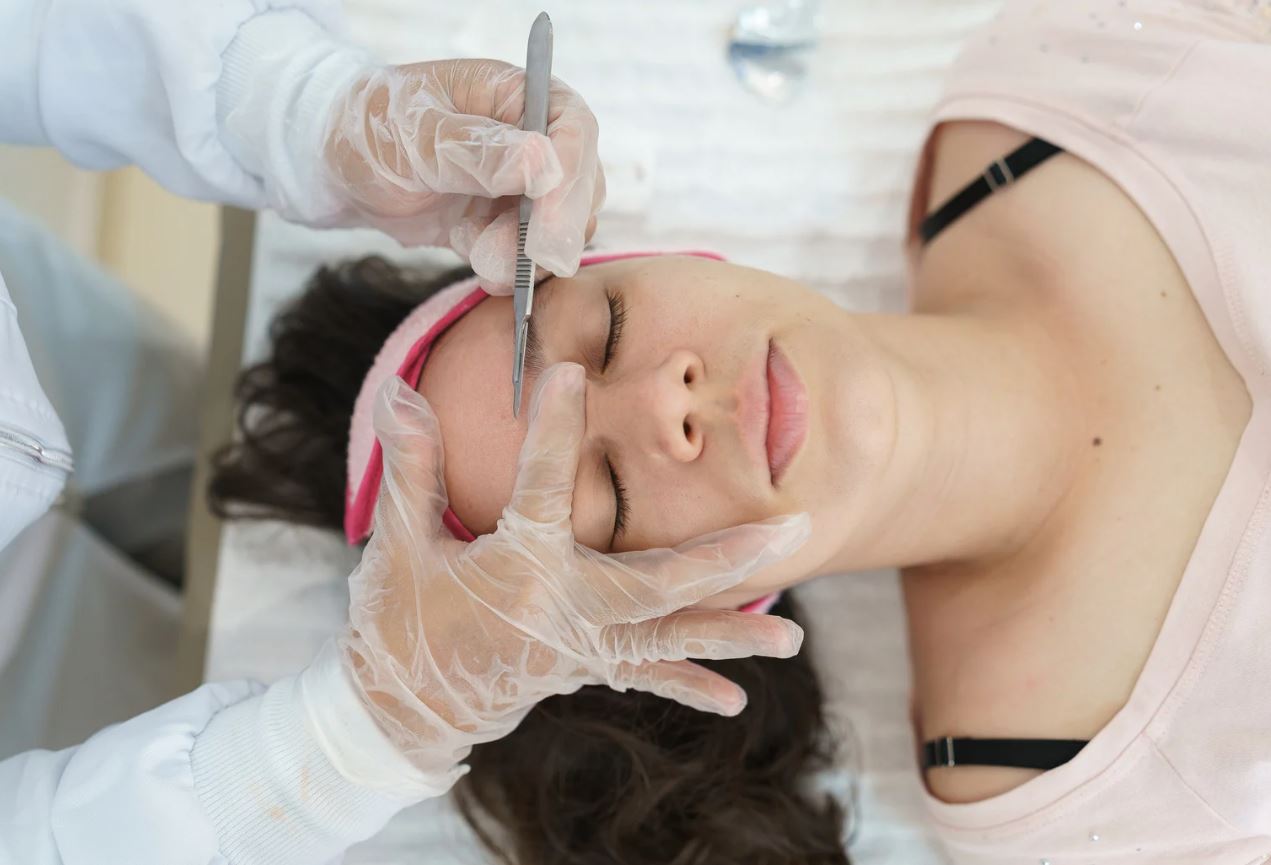Dermaplaning has become a widely popular skincare treatment, often touted for its ability to exfoliate the skin and give it a smoother, more radiant appearance. It involves using a surgical scalpel to remove dead skin cells and peach fuzz, leaving the skin looking fresh and glowing. However, as with any beauty procedure, it’s important to understand what dermatologists have to say about it, especially in terms of safety, benefits, and potential misconceptions.
Let’s take a closer look at what dermatologists think about dermaplaning, including their views on its safety, why they recommend professional treatments, and common misconceptions they frequently address.
Dermatologists’ Views on the Safety of Dermaplaning
When performed properly, dermaplaning is considered a safe and effective procedure for exfoliating the skin. Dermatologists generally agree that the technique is low-risk when done by trained professionals. “Dermaplaning is a non-invasive procedure that can give you smoother, more luminous skin,” explains Dr. Emily Roberts, a dermatologist. “The scalpel is used to remove the outermost layer of dead skin cells, which allows for better absorption of skincare products and makes the skin feel softer.”
However, it’s important to note that dermaplaning is not for everyone. People with active acne, rosacea, open wounds, skin infections, extremely coarse hair, or other skin conditions that cause irritation or inflammation should be cautious. “If you have inflamed or cystic acne, dermaplaning may exacerbate irritation and make the condition worse,” says Dr. Roberts. For people with these conditions, it’s recommended to consult with a dermatologist before opting for dermaplaning.
Additionally, as with any treatment that involves a blade near your skin, hygiene is crucial. Professional dermatologists and licensed estheticians who perform dermaplaning follow strict sanitation protocols to reduce the risk of infection. If done incorrectly or with unsanitary equipment, there’s a potential risk of cuts or infections. For this reason, it’s essential to have dermaplaning performed by a trained expert rather than attempting it at home.
Why Dermatologists Recommend Professional Dermaplaning
While at-home dermaplaning tools are available, most dermatologists strongly recommend having the procedure done by a professional. One of the main reasons is the expertise and precision that comes with professional treatment. “A trained professional knows exactly how to hold the scalpel at the right angle and pressure to ensure the skin is exfoliated safely and effectively,” says Dr. Roberts. “They also understand your skin type and can tailor the treatment accordingly.”
Professional dermaplaning offers several benefits over DIY methods, including:
- Safer Procedure: As mentioned, professionals use sterilized tools and are trained to perform the procedure with precision. This minimizes the risk of injury or irritation.
- Customized Treatment: A professional can assess your skin type and recommend the best approach, ensuring that the treatment addresses your specific skin needs.
- Better Results: Professionals have the skill to ensure a thorough treatment, meaning you’ll see more noticeable results in terms of smoothness and radiance.
Furthermore, dermatologists may recommend dermaplaning as part of a broader skincare routine, often combining it with other treatments like chemical peels or facials for enhanced results. Professional dermaplaning can also be paired with treatments that address more significant skin concerns, such as hyperpigmentation or fine lines, making it an ideal choice for those seeking more comprehensive skincare solutions.
Common Misconceptions About Dermaplaning Addressed by Dermatologists
As dermaplaning has gained popularity, several misconceptions about the procedure have surfaced. Dermatologists often find themselves correcting these misunderstandings to ensure people have accurate information before deciding whether to undergo the treatment. Here are some common myths that dermatologists frequently address:
1. “Dermaplaning Will Make Your Hair Grow Back Thicker”
One of the most common myths surrounding dermaplaning is the belief that removing peach fuzz will cause it to grow back thicker or darker. “This is absolutely untrue,” says Dr. Roberts. “The hair removed during dermaplaning is fine vellus hair, and it will grow back exactly as it was before.” Vellus hair is soft and fine, and it doesn’t have the structure to grow back thicker, so there’s no need to worry about stubbly regrowth.
2. “Dermaplaning is Only for Women”
While dermaplaning is often associated with female beauty routines, it’s a procedure that can benefit people of all genders. In fact, men with excess facial hair or rough skin texture may find dermaplaning especially beneficial. “It’s a great option for men who are dealing with rough skin, shaving irritation, or unwanted peach fuzz,” notes Dr. Roberts. “Dermaplaning can help create a smoother surface and improve the way products like moisturizers and shaving creams are absorbed into the skin.”
3. “You Should Avoid Dermaplaning if You Have Sensitive Skin”
While sensitive skin may require extra care, having sensitive skin doesn’t necessarily mean you can’t enjoy the benefits of dermaplaning. “Sensitive skin can handle dermaplaning as long as there are no active flare-ups or irritation present,” explains Dr. Roberts. In fact, dermaplaning can sometimes help reduce the appearance of redness by removing dead skin cells that may contribute to irritation. However, it’s important to have a consultation with a dermatologist to ensure it’s the right option for your specific skin type.
4. “Dermaplaning is a One-Time Solution”
Another misconception is that dermaplaning is a one-time solution for dull skin. In reality, dermaplaning is most effective when done regularly. “To maintain smooth, glowing skin, it’s best to have dermaplaning treatments every 4 to 6 weeks,” says Dr. Roberts. “Your skin naturally sheds dead skin cells over time, and dermaplaning helps speed up that process.”
Conclusion
Dermaplaning can be a safe and effective way to achieve smooth, glowing skin when performed properly. Dermatologists recommend professional treatments to ensure safety, optimal results, and personalized care. While there are several misconceptions about dermaplaning, understanding the facts can help you make an informed decision. Whether you’re looking to enhance your skincare routine or simply enjoy a more radiant complexion, dermaplaning, when done correctly, can be a great addition to your beauty regimen.
Always consult with a dermatologist to determine if dermaplaning is the right choice for your skin type and needs.




